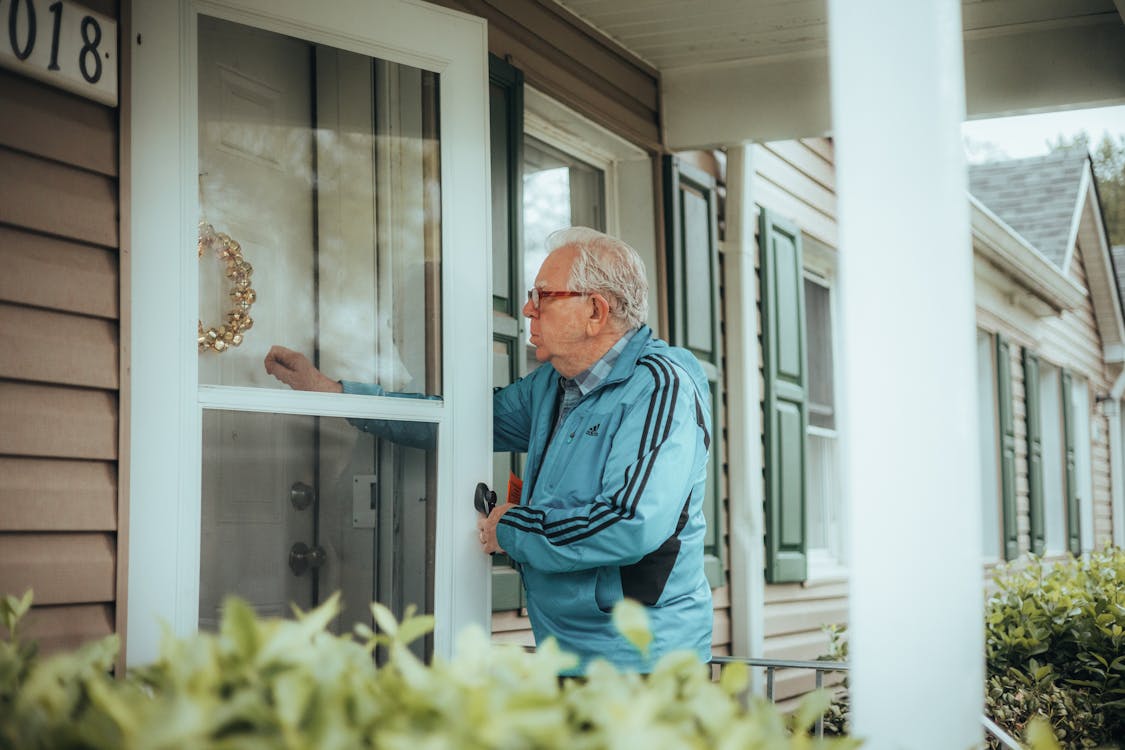
Let’s talk home improvement. Not the flashy kitchen reno you see on TV—but the kind that keeps you safe, comfortable, and independent as you age. We’re talking grab bars, walk-in tubs, widened doorways, ramps, stair lifts—the works.
These updates can make a huge difference in your daily life, but let’s be real—they aren’t cheap. That’s why senior home improvement grants exist: to give a financial helping hand to older adults who need to upgrade their homes without draining their savings.
But here’s the catch: you’ve gotta qualify.
If you’ve been scratching your head wondering “Do I meet the requirements?”, you’re in the right place. Let’s break down what it really takes to be eligible for these grants—without the fine-print confusion.
{getToc} $title={Table of Contents} $count={false} $expanded={true}
🏠 What Are Senior Home Improvement Grants, Exactly?
First off, these grants aren’t loans. They’re typically free money (yes, real!) offered by government agencies, nonprofits, and community programs to help seniors make health- and safety-related home modifications. Unlike a loan, you don’t have to pay them back—but you do have to meet specific eligibility rules.
✅ Common Eligibility Requirements (And What They Really Mean)
Let’s get to the good stuff. Here are the most common criteria you’ll need to meet to qualify for senior home improvement grants:
🎂 1. Age Requirement: Are You "Senior Enough"?
Most programs start eligibility at age 60 or 62, though some kick in at 55.
- If you’re 60+ — you’re likely in the sweet spot.
- Under 60? Some disability-related grants may still apply.
👉 Tip: Always check the age minimum for the specific program you’re applying to.
💵 2. Income Limits: Is Your Income Considered Low or Moderate?
Many grant programs are income-based, meaning they’re intended to help low- to moderate-income seniors.
This is usually based on:
- Your total household income
- The size of your household
- Your location (income limits vary by county or city)
Example:
The USDA Section 504 Grant (a big one for rural seniors) requires your income to be below 50% of the median income in your area.
👉 Tip: Use this income eligibility tool from the USDA to check where you stand.
🏡 3. Homeownership Status: Do You Own the Home?
Most grant programs are for homeowners, not renters. Why? Because these modifications are often permanent (think: ramps, widened doors, walk-in showers).
But here’s the nuance:
- You typically need to own and live in the home (your primary residence).
- Some programs allow mobile or manufactured home owners if the home is permanently installed.
Renters: Don’t give up hope. Some nonprofits work with landlords to modify rental units for senior tenants—but it depends on landlord cooperation.
📍 4. Geographic Location: Where You Live Matters
Some grants are national, but many are local or state-specific. And some—like the USDA grant—are only for seniors in rural areas.
So if you're in a major city, you might not qualify for rural-specific aid—but you may be eligible for city-run or state housing authority programs.
👉 Tip: Contact your Area Agency on Aging or local housing department for programs available in your ZIP code.
🧓 5. Health or Accessibility Needs: Do You Need Modifications for Safety or Mobility?
Grants aren’t usually for cosmetic upgrades—they’re for essential improvements that make your home safer and more accessible. Things like:
- Wheelchair ramps
- Grab bars and handrails
- Walk-in showers or tubs
- Lowered kitchen counters
- Stair lifts
In some cases, you may need:
- A doctor’s note
- Proof of disability or mobility issue
👉 Tip: Be ready to show how the modification directly supports your ability to age in place safely.
📋 6. Willingness to Comply With Program Rules
Some grants come with strings (not scary ones—just red tape). You may be asked to:
- Stay in the home for a minimum number of years
- Complete the modifications within a certain timeline
- Use approved contractors or submit receipts
👉 Tip: Read the fine print before accepting funds. And always get official guidelines in writing.
🛑 What Might Disqualify You?
Let’s keep it real. Some common reasons seniors miss out on grants include:
- Earning too much income
- Living in an ineligible area (like a non-rural town for USDA grants)
- Owning a home that’s not considered your primary residence
- Already having received the maximum lifetime grant from the program
But here’s the kicker—you may still qualify for other programs even if you don’t check all the boxes for one.
📝 How to Find Out If You Qualify: Your Next Steps
Ready to roll? Here’s how to move forward like a pro:
- Make a list of the home improvements you need.
- Look up programs at local, state, and federal levels.
- Check the requirements for each—age, income, location, health needs.
- Gather your documents (ID, income proof, homeownership papers).
- Reach out—don't be afraid to call and ask questions before applying.
And remember: You can apply to more than one program. Many seniors piece together help from multiple sources!
📌 Final Thought: You Might Qualify—Don’t Count Yourself Out
Even if you’re not sure you “fit the mold,” it’s worth applying. Eligibility requirements vary more than you might think, and new funding opens up regularly.
So don’t let the fine print intimidate you. These grants are out there to help seniors like you live safely, comfortably, and independently—at home, where you belong.